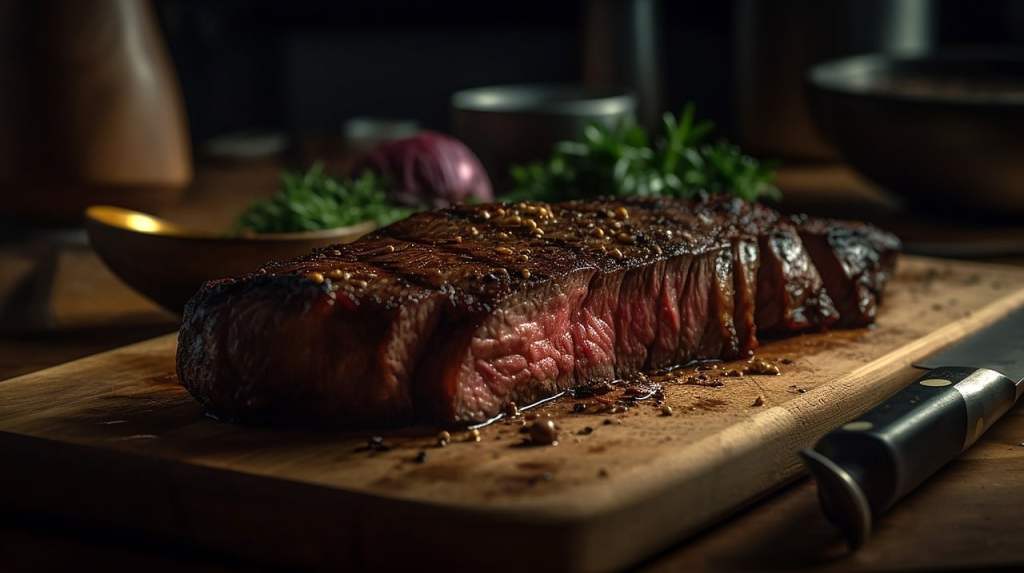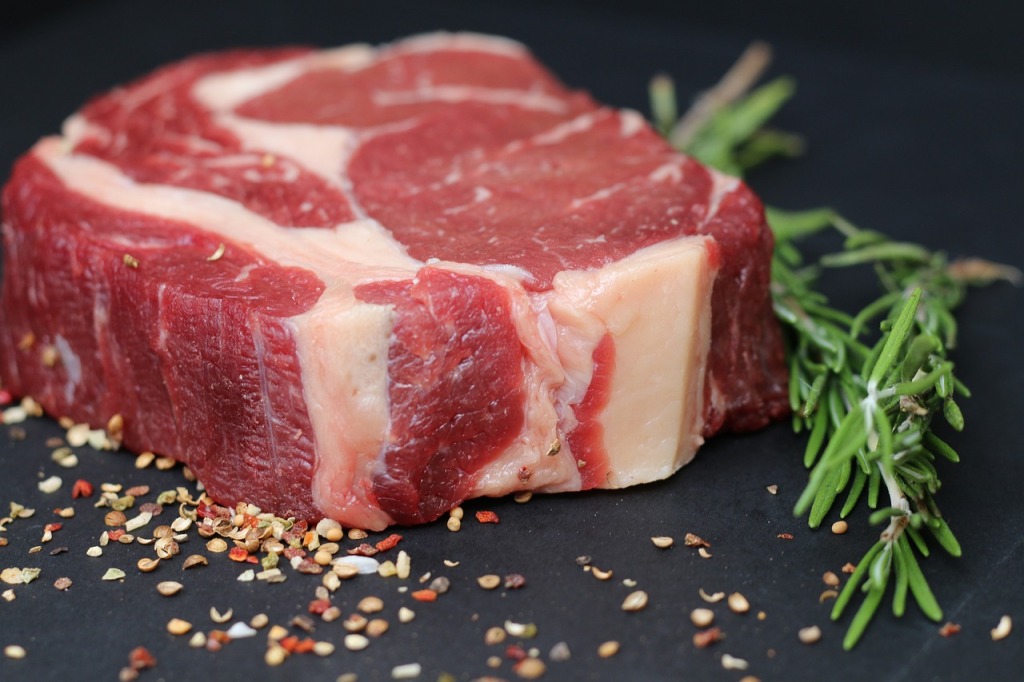If you cook a lot of meat, you know the importance of getting a good sear on it. It results in a tasty and crunchy exterior but also leads to the development of fond, the foundation of a great pan sauce. Searing is a fairly easy procedure, and most of us do it exactly the same way. The subject of this Cooking Tip, though, is about turning the searing process on its head in something called Reverse Searing.
Reverse Searing is a technique developed for cooking steak but can be used for other proteins such as burgers, chicken or entire roasts. Regular searing involves heating oil in your pan until it is very hot, putting your meat in it and allowing it to develop a beautiful brown crust on all sides. Depending on the size and cut of the meat, you might finish cooking it on the stovetop or in the oven.
In reverse searing, the meat is first gently and slowly cooked (usually in an oven) to a desired internal temperature. It is then removed from the oven and quickly seared in a hot pan stovetop before serving.
Advantages
- The meat cooks more evenly and can prevent the gray band of over-cooked meat that often develops just under the surface.
- The meat is less likely to overcook. Of course, you do need to monitor the internal temperature to ensure over-cooking does not occur.
- The meat is said to be more tender and softer.
- The low heat is not equipment-specific. Although the oven is the typical way of cooking the meat, others use a smoker, indirect grill, or even sous vide.
- The time in the oven dries out the surface, allowing for a good sear. Many feel, though, that the crust is not as good as in a regular sear.
Drawbacks
- This method is only meant for thick pieces of meat, at least 1.5 inches thick. It will not work well for thinner cuts.
- The meat takes much longer to cook.
- Many do not think it produces as good of a crust as with a regular sear.
- The cooking process involves more pots/pans.
The procedure
- Pat the meat dry.
- Season with salt and pepper and place on a rack, uncovered, in the refrigerator for 2-24 hours. (See this Cooking Tip for more information on this method of seasoning.)
- Preheat oven to 200° – 275°F.
- Place meat on a rack over a rimmed baking sheet and place in the oven until it reaches your desired internal temperature. Some recommend cooking until the meat registers 15 degrees below your desired level of doneness.
- Remove the pan from the oven.
- Heat oil in a heavy pan on the stovetop until very hot.
- Place the meat in the pan, adjust the heat and allow it to sear. Then, flip and sear the other side.
- If desired, add aromatics such as shallots, thyme, garlic, and basting with butter for a couple of minutes.
- Let meat rest and serve.

Is reverse searing worth changing your routine and planning for extra time? Only you can answer that. You will read that it is the perfect way to cook a steak and the only method to get the best steak ever. However, there are as many who have tried it and then gone back to their normal process of searing as there are proponents of the method. What about you? Have you tried it? Do you recommend it or not?
